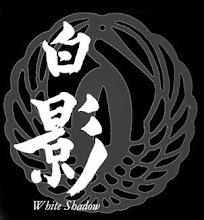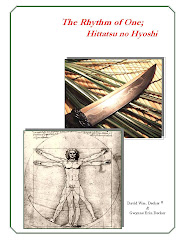E-Interview with Noesantara:
After several months of exchanging emails with Zola Octanoviar, looking at the methods their friends use to create knives, and the incredible diversity of weapons, I had a hundred questions running through my mind. I proceeded to send "Noviar" a list of some of those questions and I am going to share the collective responses from Noesantara with you. I have taken the liberty of editing both the questions and answers to save space.
 Photo from left to right: Zola Octanoviar, Kang Rhaman (knifemaker), Lucky Prianata.
Photo from left to right: Zola Octanoviar, Kang Rhaman (knifemaker), Lucky Prianata.Q: Are Indonesian knife makers held in any special regard, like Japanese swordmakers, or are they treated the same as any local craftsmen?
A: Some knife makers, especially those who make Keris are considered to be a "Noble / Respectable / Holy Man / Special Man." Some were even said to bring wealth and prosperity to the kingdom because of their special skills.
Q: Historically many swordmakers in Japan were at least marginal Shinto Priests. Is there any similar religious connotation associated with Indonesian Knife makers?
A: Keris making has a strong connection to ancient Javanese belief called "Kejawen." This belief crosses religious boundaries between Hindu, Muslim and Christian, and establishes much of the ritual associated wi
Q: Do most modern knifemakers in Indonesia use new steel from blanks or from other sources?
A: Some makers use European steel brought by the Dutch for bridges, etc. Some makers still make their blades from smelting iron ore but this is no longer common. The preferred steel is from the leaf springs of Jeeps, BMW, and Mercedes Benz. Older springs are more desirable than new ones.
Q: What is the usual quenching/tempering process and medium?
A: Most makers judge by the color of the steel when to quench and temper. They do not use a magnet to test for temperature. Water and oil are both used, depending upon the maker’s preference or experience. The colors are observed in a darkly lit workshop.
Q: How do the makers achieve such a smooth polish on the wooden and horn surfaces?
A: A form of pumice like material is used to smoothen the surfaces after which the wooden ones are finished with furniture grade varnish.
Q: Do knife makers apprentice, and if so for about how long.
A: Yes they apprentice, usually with a family elder. The apprenticeship can last for 10-15 years.
Q: Is the art of knife making growing or fading, and do most people buy local knives or modern production knives?
A: It is definitely fading! For example, most young people buy Japanese sword instead of Golok or traditional pieces. Daily cutlery purchases are mostly cheap Chinese imports of poor quality. If nothing is done then knife making the traditional way may die out within the next 50 years.
Q: Is there much demand for traditional swords? Are they used mostly for ceremonial events or martial arts training?
A: Some swords are still used for daily activities, such as hunting. The sword is also used in ritual ceremonies and dances, but the quality of the swords has declined until the balance, strength, and sharpness is very poor. (This is one of the reasons that Noesantara is attempting to reverse this trend. My note) In some remote areas extraordinary people still exist who make wonderful, sharp, balanced, pieces.
Q: And finally, do many people today practice the traditional martial arts, and if so are these normally taught in formal schools or in a home dojo?
A: Almost every village has a silat school that teaches young people. Some silat is taught in the home while other is taught in public school. In the cities the silat is fading as students turn to Japanese arts. The younger generation finds silat boring because the teacher insists on learning the basics by repetition before moving on to advanced studies. While this type of training is good for the student most of today’s generation is impatient.
My thanks to Octanoviar and Noesantara for the in-depth replies and insights into the direction that Indonesian arts and crafts are headed. I hope that through their efforts things can be turned around and that their arts will flourish once again. The plague of cheap Chinese products is like a scourge on the world right now and even smaller countries like Indonesia are feeling its negative impact on their culture and way of life. Noviar, Lucky and I are working together to design an "MIK" Modern Indonesian Knife for martial artists and those interested in a knife for daily-carry self defense. If you are interested in buying a high quality "MIK" or a traditional knife from Noesantara please contact me.

















